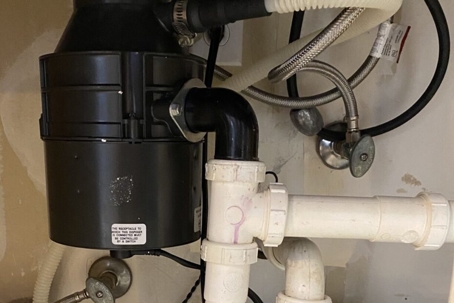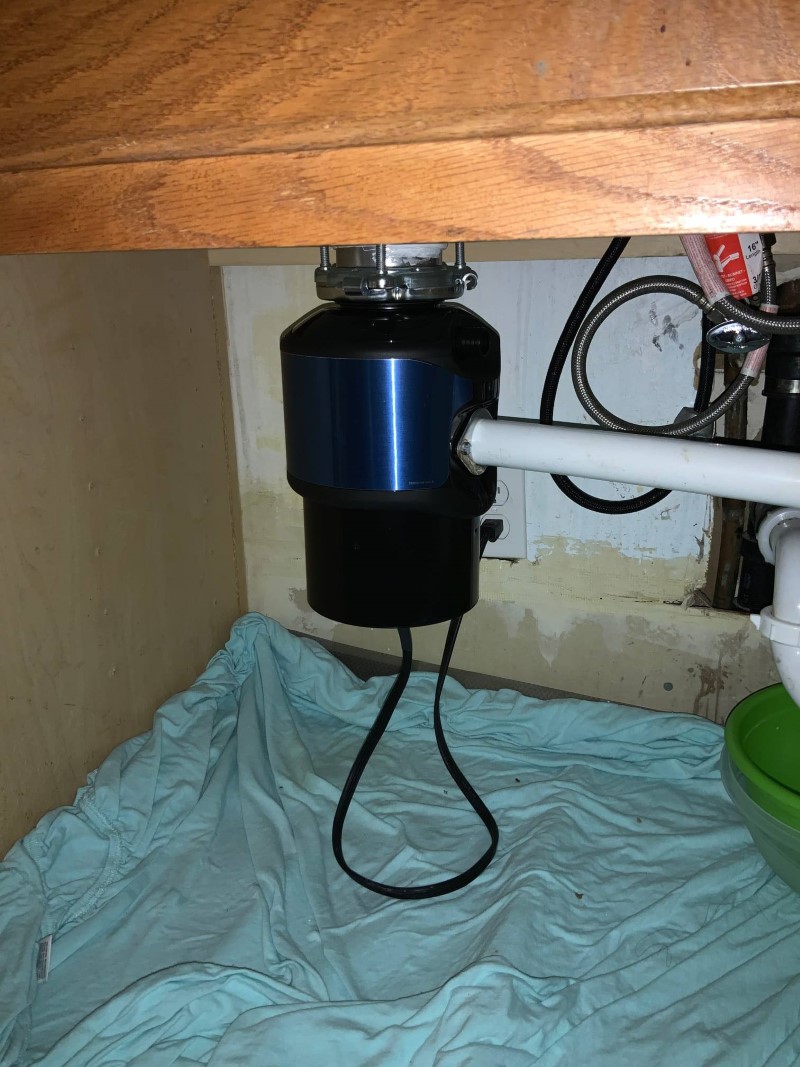Effortless Steps to Stop a Leak in Your Garbage Disposal
Effortless Steps to Stop a Leak in Your Garbage Disposal
Blog Article
Just about every person is bound to have his or her own piece of advice in relation to Tips on Fixing a Leaking Garbage Disposal.

Waste disposal unit are essential kitchen devices that help in taking care of food waste successfully. Nonetheless, a leaking garbage disposal can be an irritating and messy problem to manage. Fortunately, numerous leakages can be taken care of conveniently with a few straightforward actions. In this post, we will certainly talk about how to fix a leaking waste disposal unit properly.
Intro
Garbage disposals are mounted under cooking area sinks and are developed to shred food waste right into smaller pieces, enabling it to pass through the plumbing system quickly. While these tools are generally dependable, leakages can occur in time due to damage, loosened connections, or damages to the unit.
Common Sources Of Leaks in Rubbish Disposals
Worn Seals and Gaskets
Seals and gaskets play a crucial role in protecting against water from dripping out of the waste disposal unit. In time, these elements can degrade, causing leakages around the disposal system.
Loose Links
The connections in between the garbage disposal and the plumbing system can come to be loose in time, causing water to leak out during procedure.
Cracks or Holes in the Disposal Device
Physical damages to the waste disposal unit, such as fractures or holes in the real estate, can also result in leakages.
Identifying the Source of the Leak
Before trying to take care of a leaking waste disposal unit, it is essential to determine the resource of the leakage. This can typically be done with aesthetic evaluation or by performing simple examinations.
Visual Assessment
Examine the garbage disposal system meticulously for any indications of water leak. Pay attention to locations around seals, gaskets, and connection points.
Evaluating for Leakages
One way to check for leakages is by running water via the disposal device and checking for any visible signs of leak.
Devices and Products Needed for Repairing a Leaking Garbage Disposal
Prior to beginning the repair service process, gather the essential devices and materials, consisting of a screwdriver, adjustable wrench, plumber's putty, replacement seals or gaskets, and epoxy or patching product for repairing splits or openings.
Step-by-Step Guide to Repairing a Leaking Garbage Disposal
Shut off the Power
Prior to trying here any type of fixings, ensure that the power to the waste disposal unit device is shut off to avoid the danger of electric shock.
Find the Leakage
Determine the exact area of the leak and establish the reason.
Tighten Connections
Make use of a wrench to tighten any kind of loose connections between the disposal device and the plumbing system.
Replace Seals or Gaskets
If the leak results from worn seals or gaskets, remove the old parts and replace them with brand-new ones.
Patching Splits or Openings
For splits or openings in the disposal system, use epoxy or a suitable patching product to seal the broken area.
Checking the Waste Disposal Unit After Repair Service
When the fixing is complete, evaluate the garbage disposal by running water with it to make sure that the leak has actually been fixed.
Preventive Upkeep Tips to Prevent Future Leakages
To stop future leakages, it is necessary to execute regular maintenance on your garbage disposal. This consists of keeping it tidy, preventing putting non-food things or hard things down the disposal, and periodically looking for leaks or other issues.
Verdict
In conclusion, dealing with a leaking waste disposal unit is a relatively simple process that can be completed with standard tools and products. By following the steps laid out in this short article and exercising preventive maintenance, you can maintain your garbage disposal in good working condition and stay clear of pricey repair work in the future.
HERE’S HOW TO FIX YOUR GARBAGE DISPOSAL
WHAT TO DO IF SOMETHING IS STUCK IN YOUR GARBAGE DISPOSAL
If the impeller won’t turn, there’s probably something stuck in the disposal. It could be a steak bone or peach pit, although plumbers report pulling all sorts of inappropriate objects out of disposals, such as bottle caps or aluminum foil. Make sure power to the disposal is off, and look inside to see if you can see the source of the jam.
Never stick your fingers in a disposal. Pull out anything you see with tongs or pliers.
If the disposal still won’t work, it may be time to call a plumber or consider buying a new disposal. GEM Plumbing & Heating is here for all of your garbage disposal needs.
WHAT TO DO IF YOUR GARBAGE DISPOSAL DRAIN IS CLOGGED
Take everything out from underneath your sink and put a bucket or other container under your disposal to catch any water that drains out. Disconnect your disposal from the power supply. If it’s plugged into a wall outlet, unplug it. If it’s hardwired into an electrical box, go to the electrical panel and turn off the breaker for the disposal. Pour ¼ cup of baking soda into the drain, followed by ½ cup of white vinegar. Give the solution a few minutes to fizz and do its work. Look into the disposal with a flashlight to see if you can see an object that might be causing the clog. If you see it, remove it using tongs or pliers. MORE TIPS ON DEALING WITH A CLOGGED GARBAGE DISPOSAL
Never use drain cleaner in a garbage disposal. It can damage the plastic parts inside the disposal. You can also be splashed with the caustic liquid while working to clear the clog. Beware! Never stick your fingers into a garbage disposal. Trust us — not a good idea. In many instances, your dishwasher drains through your garbage disposal. This allows the disposal to grind any large food particles that may be drained out of your dishwasher. There are some jurisdictions, however, where the plumbing code prohibits such a connection. WHAT TO DO WHEN YOUR DISHWASHER DRAINS THROUGH THE DISPOSAL
Run some water in the sink so your plunger has at least a ½-inch of water to create a seal and plunge vigorously up and down several times. You may need to repeat this several times. Run hot water down the drain to clear any residue that remains.

As an avid person who reads on Why Is , I assumed sharing that piece of writing was valuable. If you enjoyed our blog entry kindly do not forget to share it. We appreciate reading our article about Why Is .
Call Today Report this page